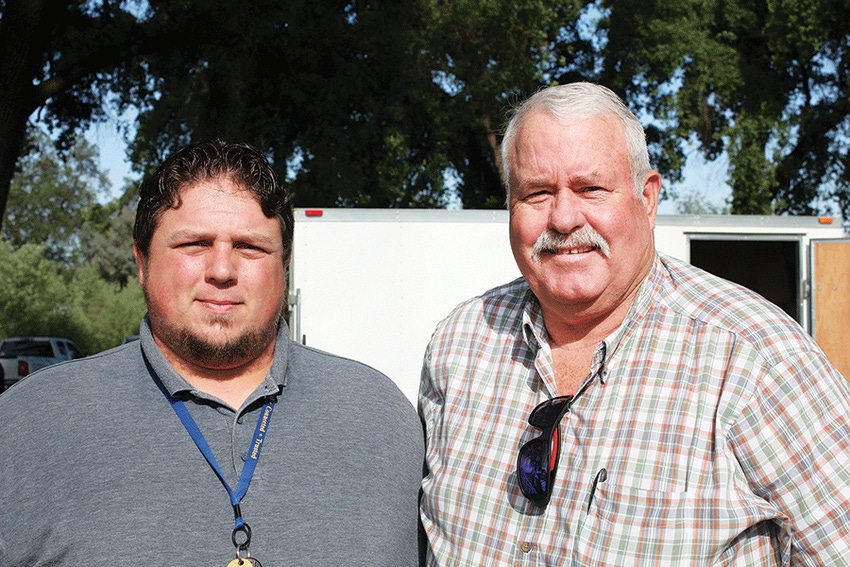
“Farm for success, farm for color, and I would almost guarantee you will have a lot more interest in your product, and get premiums — or if nothing else, you’ll keep extensions on those contracts when they come up. You’re not going to be the one they want to dump; you’ll be the one they want to keep.”
May 9, 2018

California’s white concentrate market continues to shrink, while the state’s raisin industry is starting to fare better than it has in recent years.
“The number of gallons of grapes crushed for white concentrate last year was under 10 million,” says Greg Magill, president of Magill Brokerage. “In 2003 and 2004, we were at least at 35 million gallons. That’s quite a difference — and a lot of that is related to non-sustainability of raisin-type varietals that were going green.”
Much of that acreage has been taken out, with some of it giving way to nut crops, most notably almonds. The Thompson Seedless grape, a staple for concentrate and raisin production, was particularly vulnerable to removal.
At the same time, Magill says, the concentrate market in California has stabilized itself, “while the rest of the world was in chaos. Spain’s crop was off 40 percent, and they’re a key player in this market. Then you drop down to Argentina, and it was off 25 percent last year, and they are down to four or five processors, compared to 15 about ten years ago.”
A BOON TO RAISINS
The shrinkage has been a boon to the raisin industry, which is seeing “the best money in a long time —and I don’t see demand diminishing.” The 2017 raisin crop price was set at $1,800 per ton, well above the 2016 price of $1,100, which was blamed on a 20 percent uptick in world production.
Leaders of the Fresno-based Raisin Bargaining Association have predicted this year’s crop could command a price that will top the previous record of $1,900 per ton set in 2012.
Magill doesn’t foresee a glut of raisins, given that acreage for that crop is down to 150,000, which would result in likely production of 300,000 tons, a manageable marketing level “unless Turkey or Spain have big crops.”
President Trump’s stance on tariffs and weakening of the U.S. dollar work in favor of farmers getting a fair price for raisins next year, he says.
There is increased use of table grape strippings, or “”off grapes” such as Colombard or Chenin Blanc, for production of white concentrate, “even some excess Chardonnay. They’ve got the ability to adjust the acids and use new technology.”
OUTLOOK FOR CONCENTRATE
Magill declined to speculate on what the price would be for green grapes to be crushed into concentrate, saying it will only “be in relation to what the raisin price is.” This year, he says, the outlook for grapes for concentrate appears better in Spain because of rains, and a more normal crop is coming off in Argentina.
One of the success stories in the concentrate picture is a continued appetite for Rubired, which is also used to add color to wines. “Rubired is uniquely California,” Magill says, but sounds a caution that, in recent years, some Rubired has lost color, meaning more of the grapes are needed to get the desired color, increasing the cost to the end user.
“I don’t know if the cause of that is climatic, or if it’s due to over-cropping,” he says, “but you have to grow for color, not just tonnage.”
The San Joaquin Valley has long placed an emphasis on production for wines and concentrate, but in recent years has begun to step up efforts to improve quality.
FARM FOR SUCCESS
“You are in charge of your crop,” Magill says. “Farm for success, farm for color, and I would almost guarantee you will have a lot more interest in your product, and get premiums — or if nothing else, you’ll keep extensions on those contracts when they come up. You’re not going to be the one they want to dump; you’ll be the one they want to keep.”
The nation has been benefitted, he says, from the Food Safety Modernization Act, which gives the Food and Drug Administration authority to regulate the way foods are grown, harvested, and processed.
The act includes requirements for traceability from the farm to the shelf, which cannot be matched by some competitors.“Eighty percent of Argentina doesn’t have the capability of traceability to a specific field, date, and time of production,” Magill says.
About the Author(s)
You May Also Like



